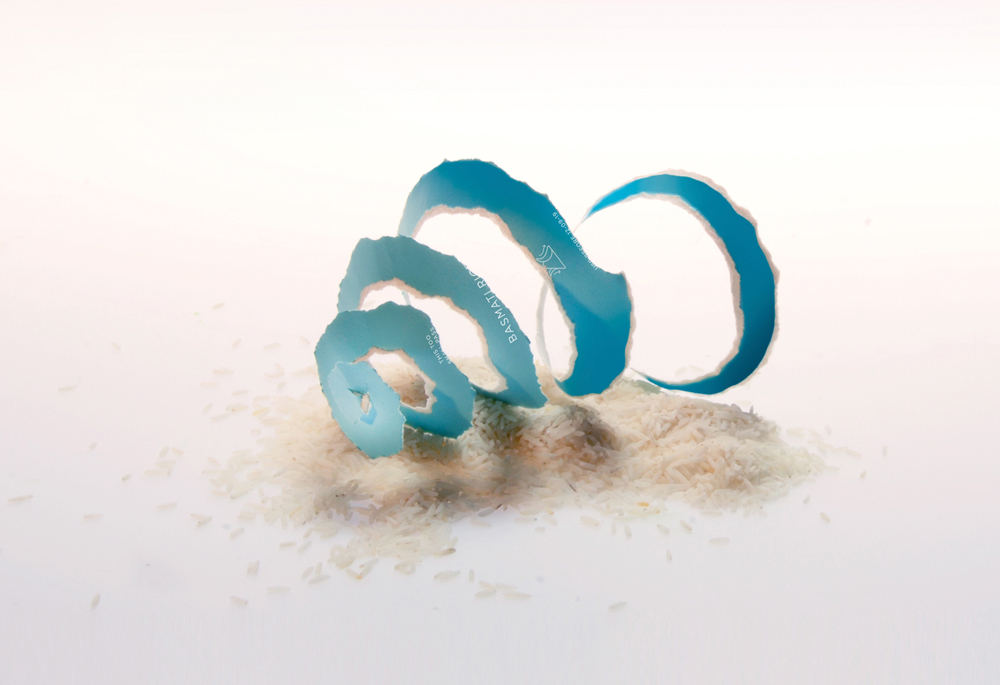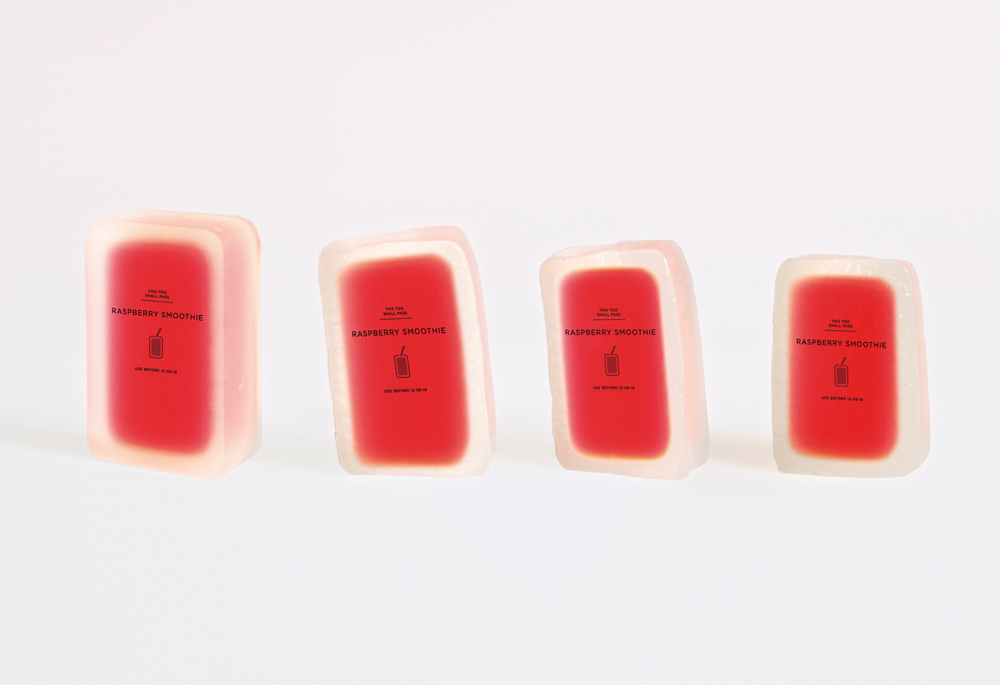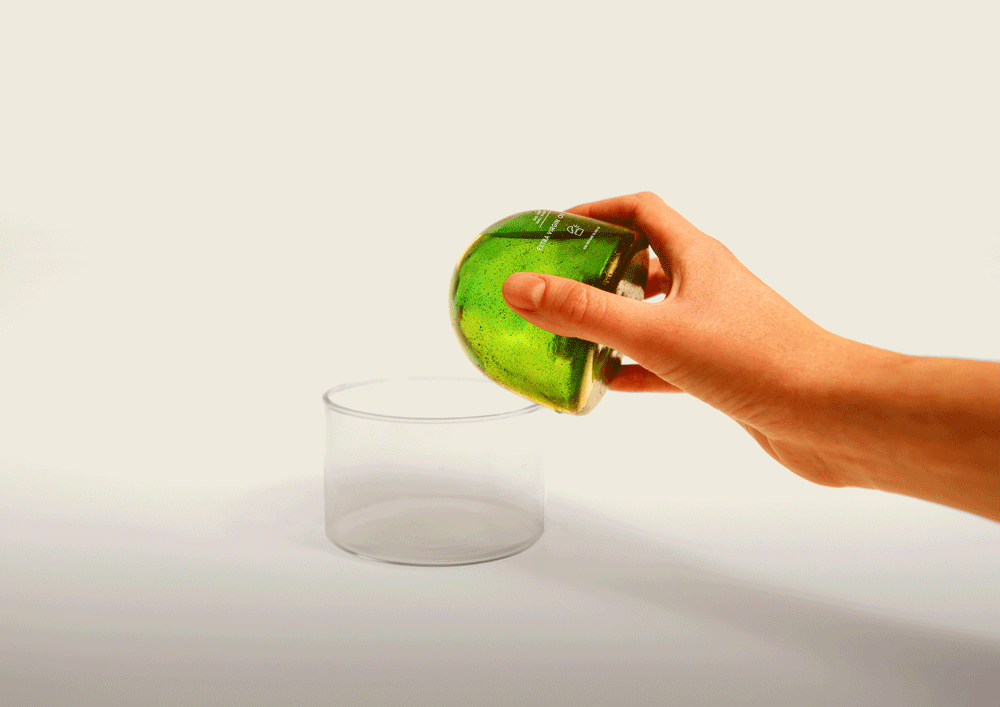As a class of environmentally conscious individuals, we spend a lot of time and energy analyzing the presence of plastic in marine environments. But what if there was a way to remove plastics from the equation?
A creative duo at the Swedish design team, “Tomorrow Machine” are doing just that. The team, appropriately named for its futuristic designs, focuses on inventing “sustainable packaging food wrappers that can change shape to double as a dish or bowl, and packaging that’s meant to be composted or washed down the drain.” These two approaches physically took shape two years ago when the team released their “This Too Shall Pass” line of products.
The cleverly titled line, featured the following items:
The materials used are among a select few biodegradable materials that don’t react with or alter the contents of the package. The search for similar materials continues. The materials used do not interfere with the flavor of the food but the team has mentioned the possibility of flavorful packaging.
As exciting as this breakthrough may be, there are several crucial questions, the sources fail to address. One such question is: if this packaging were to be mass-produced, would production of these materials lead companies to use GMOs and environmentally harmful methods to keep up with demand? Could these products become targets for bio-terrorists? Lastly, due to the packaging’s short shelf life, would disposal of unopened food and beverage products increase, contributing to landfills? As the team further develops its prototypes, hopefully, they can provide the answers.
And when will you find this packaging lining the shelves of Whole Foods, Trader Joe’s, independent food co-ops and any other place hipsters gather to eat? The designer duo estimates that day will come five years from now.
Sources:
http://www.iflscience.com/environment/meet-next-generation-waste-free-food-packaging





By: Brett Branco on September 19, 2014 at 10:23 pm
This is pretty cool and forward thinking. Plastics are ubiquitous because they are useful and cheap. We have to find ways to replace their usefulness without causing economic hardship and disruption. Tricky task that requires intelligent, creative minds (hint hint hint).
By: Alec Mateo on September 30, 2014 at 2:23 pm
It was interesting to read about this approach to the problem of plastic. Much has been said in class as to the consequences of it’s improper disposal, but it would make sense to focus just as much energy on the idea of replacement materials. Materials whose biodegradability will result in no harm to the environment. I perused the designs and was intrigued by the aesthetic appeal they had. The designs were extremely inviting and held the same “clean” feeling plastic normally does. This brings up a very important aspect in the issue of solving the world’s waste product. The potential solutions for the issue must be approached from the perspective of plausibility. That is to say that the science behind these designs, for instance, will only ever go as far as people willingness to introduce them into their daily lives as a viable plastics replacement.
Science, it would seem, with out proper implementation of what are often considered soft studies (proper reading of information, design, psychology) will fail to produce effective results.